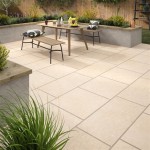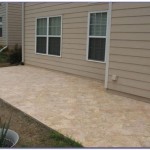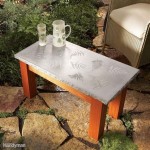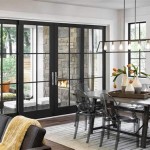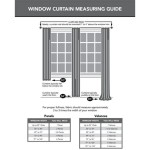Choosing The Right Sliding Patio Door Rollers Replacements
Sliding patio doors offer a seamless transition between indoor and outdoor living spaces, providing natural light and easy access to decks, patios, and gardens. The smooth operation of these doors depends largely on the condition of their rollers. Over time, these rollers can wear down, causing the door to stick, drag, or become difficult to open and close. Replacing worn or damaged rollers is crucial for maintaining the functionality and longevity of a sliding patio door. Selecting the appropriate roller replacements, however, requires careful consideration of several factors to ensure compatibility, durability, and optimal performance.
Understanding Roller Types and Configurations
Before embarking on the roller replacement process, it is essential to identify the type of rollers currently installed in the patio door. Several different types are available, each designed for specific door styles and weight capacities. Identifying the correct type is the first step in a successful replacement. Common roller types include:
Edge Rollers: These rollers are typically found on older or less expensive sliding patio doors. They are positioned on the edge of the door panel and often feature a simple design. Edge rollers are generally less robust than other types and may not be suitable for heavy doors.
Mortise Rollers: Mortise rollers are recessed into the bottom of the door panel, providing a more secure and stable support system. They are commonly used in heavier doors and offer smoother operation compared to edge rollers. Mortise rollers come in various sizes and configurations, so careful measurement is important when selecting replacements.
Tandem Rollers: Tandem rollers feature two wheels per roller assembly, effectively doubling the load-bearing capacity. These are ideal for large, heavy sliding patio doors, providing enhanced stability and smoother gliding. Tandem rollers are often found in higher-end patio door systems.
Adjustable Rollers: Many modern sliding patio door rollers feature an adjustable height mechanism. This allows for fine-tuning the door's alignment within the track, ensuring a smooth and even glide. Adjustable rollers can compensate for minor imperfections in the track or settling of the door frame.
In addition to the type of roller, the configuration is also important. Some doors use a single roller at each corner, while others utilize two rollers per corner for increased support. Observing the existing roller configuration is crucial for selecting the correct replacements.
Identifying Critical Roller Dimensions and Specifications
Once the roller type has been identified, carefully measuring the existing rollers and related door components is essential for selecting compatible replacements. Pay close attention to the following dimensions and specifications:
Wheel Diameter: The diameter of the roller wheel is a crucial measurement. Using a digital caliper or precise measuring tool, determine the diameter of the existing roller wheel in millimeters or inches. The replacement roller should have the same wheel diameter to ensure proper fit and function within the track.
Roller Width: The width of the roller assembly, including any housing or brackets, is also important. Measure the overall width of the roller assembly to ensure that the replacement will fit within the available space within the door frame.
Mounting Hole Spacing: If the rollers are attached to the door with screws, measure the distance between the mounting holes (center to center). The replacement rollers should have the same mounting hole spacing to facilitate easy installation without requiring modifications to the door.
Roller Height: The overall height of the roller assembly, including the wheel and mounting hardware, is essential for ensuring proper door alignment. If the existing rollers are adjustable, note the maximum and minimum height settings. The replacement rollers should have a similar height range to allow for fine-tuning the door's position within the track.
Bearing Type: The type of bearing used in the roller wheel can significantly impact its performance and durability. Common bearing types include ball bearings and needle bearings. Ball bearings offer smoother operation and are generally more durable than needle bearings. Inspect the existing rollers to determine the bearing type and select replacements with comparable bearings.
Material Composition: The material used in the roller wheel and housing also affects its durability and resistance to wear and tear. Common materials include steel, nylon, and polyurethane. Steel rollers are strong and durable but can be noisy. Nylon rollers are quieter but may not be as durable as steel rollers. Polyurethane rollers offer a good balance of durability and noise reduction. Choose a roller material that is appropriate for the door's weight and usage frequency.
Documenting these measurements and specifications will help narrow down the search for compatible roller replacements and minimize the risk of ordering incorrect parts. It is also helpful to take clear photographs of the existing rollers and mounting hardware for reference.
Evaluating Roller Quality and Durability
After identifying the correct roller type, dimensions, and specifications, it is important to evaluate the quality and durability of the available replacement options. Choosing high-quality rollers can significantly extend the lifespan of the patio door and prevent premature failure. Factors to consider include:
Material Strength: Investigate the materials used in the roller's construction. High-quality steel, durable nylon, or robust polyurethane indicate better resistance to wear and tear. For heavier doors, prioritize rollers made from stronger materials like stainless steel or hardened steel.
Bearing Quality: The quality of the bearings directly impacts the roller's smoothness and longevity. Look for rollers with sealed ball bearings or needle bearings made from high-quality steel. Sealed bearings are less susceptible to dirt and debris, extending their lifespan.
Load Capacity: Check the load capacity of the replacement rollers and ensure that it is sufficient for the weight of the patio door. Overloading the rollers can lead to premature failure and damage to the door and track. The load capacity is typically specified in the product description or technical specifications.
Manufacturer Reputation: Choose rollers from reputable manufacturers known for producing high-quality hardware. Read online reviews and check customer feedback to gauge the roller's performance and durability. Established brands often offer warranties or guarantees on their products, providing added peace of mind.
Corrosion Resistance: If the patio door is exposed to harsh weather conditions, select rollers with corrosion-resistant coatings or materials. Stainless steel rollers or rollers with a protective finish can withstand moisture and prevent rust and corrosion.
Ease of Adjustment: If the patio door requires precise alignment, choose adjustable rollers that allow for fine-tuning the door's position within the track. Adjustable rollers can compensate for minor imperfections in the track or settling of the door frame.
While opting for less expensive rollers may seem tempting, investing in higher-quality replacements can save money in the long run by reducing the frequency of repairs and replacements. Compromising on quality can lead to premature roller failure and potential damage to the patio door frame and track.
In addition to these considerations, inspect the condition of the patio door track. If the track is damaged or worn, it may be necessary to repair or replace it to ensure smooth roller operation. Before installing the new rollers, clean the track thoroughly to remove any dirt, debris, or buildup that could impede the door's movement. Lubricating the track with a silicone-based lubricant can also help reduce friction and improve the gliding action of the door.
By carefully considering these factors, individuals can select the appropriate sliding patio door roller replacements that are compatible with their door type, dimensions, and weight. This will ensure a smooth and reliable operation, extending the life of the patio door and maintaining the functionality of the door.

Identifying The Right Replacement Roller For Your Sliding Glass Door Swisco Com

The Right Roller For Your Patio Screen Door Pca S

All Brands Sizes Styles Patio Door Roller Screen Wheel Master Window Parts

Essential Guide To Sliding Glass Door Roller Replacement Tips And Tri Window Hardware Direct

All Brands Sizes Styles Patio Door Roller Screen Wheel Master Window Parts

Sliding Patio Door Roller Assemblies At Com

How To Replace Sliding Glass Door Rollers Doctor

Sliding Patio Door Roller Assemblies At Com

All Brands Sizes Styles Patio Door Roller Screen Wheel Master Window Parts
Window Patio Door Parts Tracks Repair Threshold Solutions Biltbest
Related Posts

